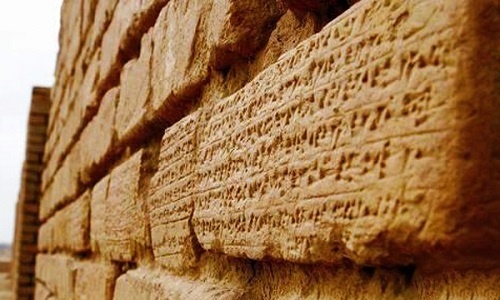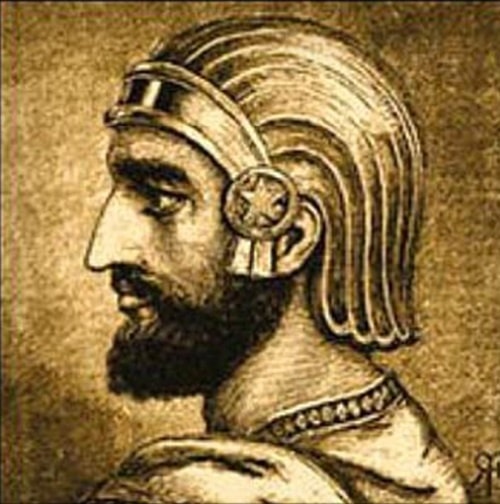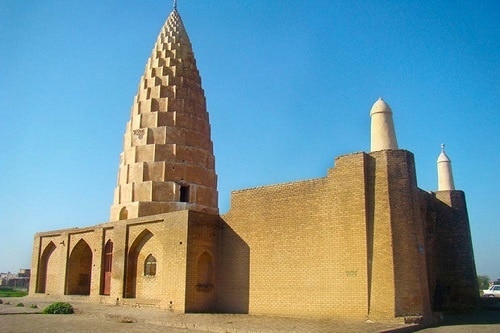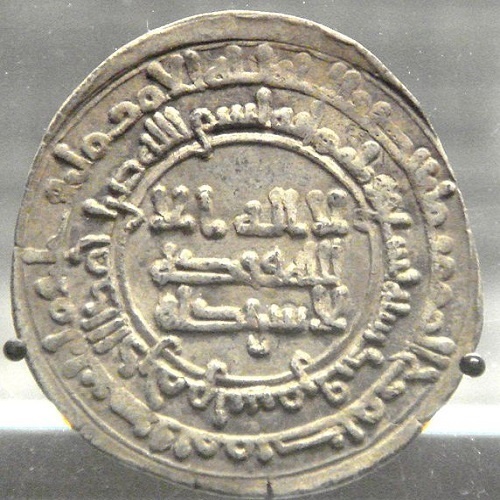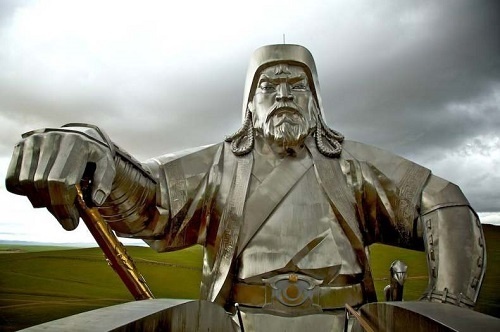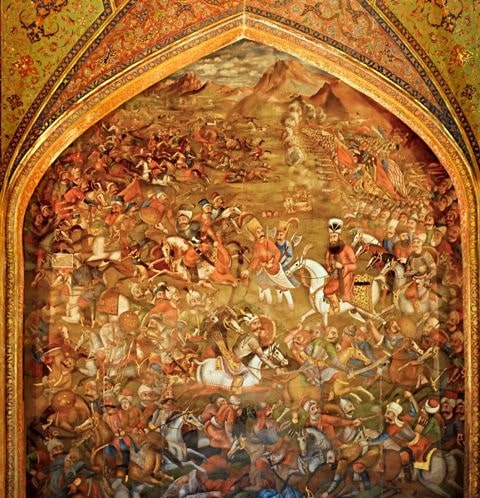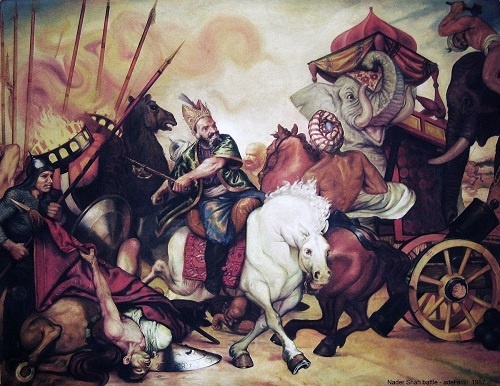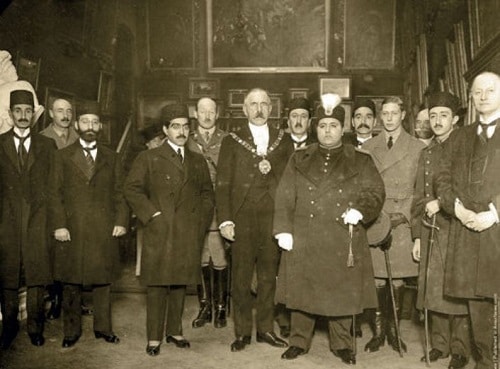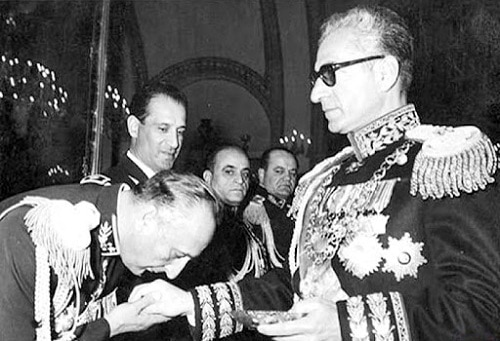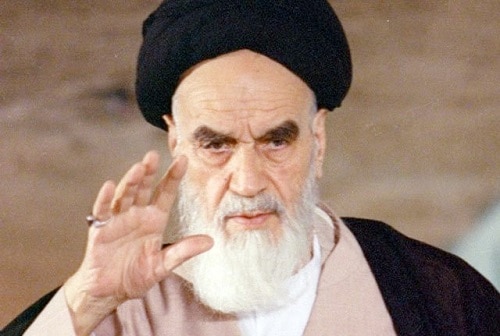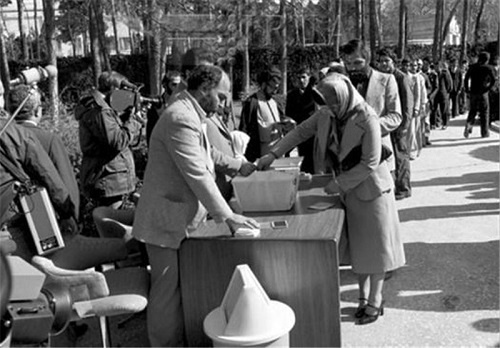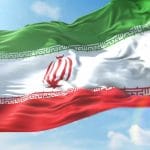Hegel regards the Iranians as the first historical nation and the Persian empire as the first empire of history. When it comes to the history of Iran, one has to consider whether it refers to the history of tribes and peoples who have lived on the political frontiers of modern Iran since the beginning of history or the history of peoples and peoples who somehow find themselves Iranian. Have read and lived in the geography that encompasses present-day Iran and the lands that historically were part of Greater Iran (Iranshahr). Occasionally, history of Iran begins with the arrival of the Aryans, also called Iran, on the Iranian plateau. But this does not mean that the Iranian plateau had been uninhabited or un civilized arrived. Prior to the arrival of the Aryans on the Iranian plateau, many ancient civilizations before Aryans , had flourished and faded, and some were still flourishing. Iran’s history is basically divided into two general sections of pre-Islamic Iran and post-Islamic Iran, which are themselves divided into smaller sections.
History of Iran: Iran pre-Islamic history
It is divided into three parts: Iran before the Aryans, Aryan migration to Iran, Ancient Iran
Iran before the Aryans
Before the Aryans, various ethnic groups lived in different parts of the Iran plateau. In the history of Iran before the Aryans, the civilizations of Burnt City (in Sistan), Ilam (north of Khuzestan), Jiroft (in Kerman), the inhabitants of Silk Hill (in Kashan), Urartu (in Azerbaijan), the Hills Gian (in Nahavand) and The Kassian civilization (in Kermanshah and Lorestan) and the Tabores in Tabaristan (Mazandaran) were in the territory of Iran. The Ilam government was the longest-running civilization of the Iranian plateau before the arrival of the Aryans and has a complex history whose land in southwestern Iran was more or less in line with Khuzestan. The capital of Ilam was the city of Susa whose relics have been found in this city. Apparently different sections in Ilam have had separate governments and each has its own kings. These include Evan, Anshan, Simash and Shush. The Ilam government has often been at war with the more evolved Mesopotamian states, the Sumerians, Akkadian, Babylonians, and Assyrians. It became one of the largest forces in the region during a period of Iranian history. Since the emergence of the Persian emperors (550 BC), Ilam has been a tributary province of Iran. The city of Susa was also a rich and magnificent city at this time. The Ilam language was one of the three languages in which the royal texts of Iran were written.
Migration of Aryans to Iran
The Aryans are a large branch of the white (Caucasian) race whose ancestral land was probably north of the Black Sea and the Caspian Sea around the rivers of Sihon and Jihon. They later moved to Europe and g. As a result, the Aryan and their languages are referred to as Indian and European. Aryan means noble. The Aryans of India and Iran lived together for a long time, after a long time they separated to shared legends. And they had the same language social organization. In the history books of Iran, the Aryans came to Iran some 2000 years ago And some in the 14th century AH. until the 6th century BC. They have written. When the Aryans reached the Iranian plateau, they initially tore down the indigenous people, but then used them. Aryans after entering Iran divided into different tribes, the most important of which were the Medes, the Parthians and the Persians. The name Iran is derived from the Aryan name and means Aryan land.
History of ancient Iran
Ancient Iranian history considered as the period of formation of the Median state until the Sassanid rule and the Arab invasion to Iran.
Median 550 to 708 BC.
The Medes were an Iranian of Aryan descent who settled in the western part of the Iranian plateau. The land of the Medes included the western part of the Iranian plateau. Azerbaijan” s northwestern territory was known as the Median plateau and the rest of the Zagros area by the Median plateau. The capital of Medes is Hegmataneh They were able to establish the first government of Iranian history in the early seventh century BC. The Median government was extinct by Cyrus in the 550 BC and the Iranian kingdom was transferred to the Persians.
Achaemenid 330 to 550 BC.
The Achaemenid dynasty is the name of a dynastic kingdom in Iran. The king of this lineage belong to the Achaemenids, who was the chief of the Pasargad clan of the Persian dynasty. The Achaemenids were originally native kings of Persia ans then Anshan, but with the defeat of Cyrus the Great over Ishtovig Vapsinpad of king Mad, and then the capture of Lydia and Babylon, the Achaemenid kingdom become a great empire. Hence, Cyrus the great is considered the founder of the Achaemenid Empire. The Persians are people of Aryan origin who have come to the Iranian plateau about three thousand years ago. The Persians, along with the Medes, flowed into the western parts of Iran and settled around lake Urmia and Kermanshah. With the failure of the Ilam government, the influence of the Pars family extended to Khuzestan and central parts of the Iranian plateau. The shelf life of the Achaemenid Empire was 220 years. Their rule over the royal kingdom has also expanded agriculture, provided business, and even encouraged scientific and geographical research. The ethical foundations of this empire, especially in the era of Cyrus and Dariush the great, have included respect for people‘s beliefs and support for the disabled against the powerful people.
It is historically interesting, the Cyrus statement on Babylon victory, scholars remarked as an example of ancient human rights foundations. Cyrus was anointed by the Babylonians, Marduk’s chosen, by the jews, he was touched by God, and it does not seem that the Medes considered him an alien ruler. Herodotus says that “the Persians spoke of him as a father because he was kind and did not neglect what was good for the Iranians.” Cyrus seems to respect the traditions and religions of the conquered lands.” Cyrus was the most popular king of Persia and the founder of a world empire.” DOndamayev says. The Persians chose him as the father, the priests of Babylon Marduk, the jews regarded him as the Messiah sent by the Lord, and the Greeks considered him a great conqueror and intelligent politician.” “Cyrus had overthrown three empires: Mad, Lydia, and Babylon,” says Walter Heints. The descendants did not forget that Cyrus did not kill any of the three rulers, neither Astyagus, nor Crescos, nor Nabonid, but that he was sufficient in their exile and even gave them royal life.”This behavior was unprecedented in the ancient world and never happened until Cyrus. Achaemenid ruled much of the known world of that day from the Indus to the Danube in Europe and from Central Asia to northeast Africa. The Achaemenid Empire fell to Alexander the Great. Achaemenid empire founded by Cyrus the Great is documented in the UNESCO as the largest and first ancient empire in the ancient world.
Seleucid 330 to 250 BC.
After Alexander’s death (333BC), his conquests were split between his commanders, and the most of his Asia dominions, that Iran was the nucleus of them, reached to the first Seleucus. Thus Iran came under the rule of the Seleucids. They ruled over big part of western Iran fore eighty years, but there was almost no peace in their territory. After a while the Parthians expanded their influence and finally overthrew the Seleucids and because of the name of theire first king, this empire called ashkanian.
Parthian 250 BC. to 226 AD.
The Parthians praised the Greek civilization that had existed during the Seleucid period in Iran. Some of the Parthian kings were well acquainted with Greek literature, and some Greek plays were performed at the court of Parthian kings. At that time, it was a House of commons, consisting of two houses, one of the nobility and the other, the house of knowledge and Maghaneh, which had a deliberate nature and had little influence. Sorna was the most important Iranian commander in this period. This brave commander of the Ashkanian, during the reign of the thirteenth Ashk the first lord of ashkanids, commanded the Iranian army in the first war with the Romans (battle of harran) and the Romans who had been victorious everywhere until then, For the first time hardly defeated. In this war Crassus his son and most of his troops were destroyed, this was the greatest defeat of the Romans by the Iranians in history. Crassus, seeking to conquer Iran, and India like Alexander, but he defeated by the Iranian commander, Sorna, and himself and most of his soldiers were killed. In this period of Iranian history, livestock, agriculture and commerce flourished and slavery grew. Their religion of Zoroastrianism and the worship of their ancestors. Other religions also had freedom. The Ashk were the one who collected the Avesta. Their language was Middle Persian, which had a great influence on the Romans because of their high contact with the Romans. Their lines are Syriac slowly and some Greek phrases are engraved on the coins.one of the works of this period in Iranian history is the Anahita Temple in Kangavar, the ruins of the Kangavar temple, prominent motifs from the Mehrdad and Goodars period, is in Bistoon.
Sassanid 224 to 651 AD.
The Sassanid are the royal dynasty of Iran during the history of Iran, which ruled from 224 to 651 AD. Sassanid emperors, originally from Pars province, dominated much of the western Asia continent. the Sassanian capital was Tisphon, that was near Baghdad in modern-day Iraq. The Parthian dynasy was extinct by Ardashir 1th Sassanid. He founded the Sassanid dynasty, which continued in Iran until 652 AD. The Sassanid government was a national government based on Iranian religion and civilization and gained enormous power. During this period, the wars between Iran and Rome continued. The Sassanid period is considered one of the most important, most sensitive and influential periods in Iranian history. The Sassanid empire is the last Persian Empire before the Arab invasion of Iran and Islamization of Iranians. In the Sassanid era, Iran had a great influence on Roman culture. The influence of Sassanids was not limited to Iran’s borders, but also to India, China, Western Europe, and Africa. The Sassanians played a prominent role in the formation of European and Asian art in the middle Ages. The Sassanid kings were enlightened supporters of literature and philosophy. By the order of Khosrow 1th, the works of Plato and Aristotle were translated into Pahlavi and tought in Gundishapur, and it is even said that he himself studied them. During his reign, many historical events were arranged, the only remaining of which was Ardeshir Babakan’s work, a blend of history and literature that later become the basis for the Iranian national epic Shahnameh. When Justinian 1th closed the doors of the Athens school, seven professors came to Iran and took refuge in Khosrow’s court.
Khosrow in his treaty with the Justinian stated that the Greek sages should be allowed to return home and not be persecuted. Founded in the fifth century, Gundishapur University had become “the largest center of thought in the world” during Khosrow 1th, and attracted students and teachers from all over the world. Nestorian Christians were accepted there and translated Greek works on medicine and philosophy into Assyrian. Neo-platonists also came to Gundishapur and planted the seeds of Sufi mysticism there. The medical knowledge of India, iran, Syria and Greek merged there and created a thriving medical school. The period of Sassanid Empire ended in 651, after the death of third Yazdgerd ruler, during the Arab invasion of iran, Iran become dominated by Muslim Arab.
History of Iran: Iran History after Islam
After the establishment of Islam in the land of Iran, as a result of the victory of Arabs over the Sassanids and their conquest of Iran, there were many developments in the social, religious and political in the history of Iranian history. The Muslims conquest of Iran was not easy. The people of the towns sooner accepted the rule of the Muslims, but the villagers simply did not accept their rule. Eastern parts of Iran, as well as Tabarestan and Gilan, were later occupied by Muslims. The Iranian did not hide their opposition to the rule of the Umayyad and the Abbasids on Iranian soil, and set up independent movement that could form the following governments.
The Taherians(826-881 AD.) for the first time since the emergence of Islam in the history of Iran have proclaimed the eastern regions of Iran such as Khorasan. At the beginning of the third century, Tahir bin Hussein, one of the commanders of the Abbasid Mammon, became Amir Khorasan on his behalf, and because of his disobedience to the Mammon, the first independent Iranian government after Islam was established in Iran and his rule over the Taherians Became famous. During the Taherian period Balkh was chosen as the capital.
The Safarids (886-903 AD.) also used Persian language instead of Arabic language for the first time. Their capital was Zarrang, and they were known as descendants of Sassanids who had migrated to Sistan after the Arab invention.
The Smanid (819-999 AD.) emerged a new Persian script and the Arabic alphabet became popular in Persian. Although the Samanids used the bureaucratic affairs of the Arabic language and regarded it as the slogan of unity of the caliphate,they made it possible for Iranian poets such as Rudaki and Daghighi to be one of the first to complete their national dialect by completing and combining local dialects, write their texts.
The al-Bouwy’s (945-1055 AD.) Governors conquered Baghdad after conquering Shiraz and establishing their rule. A-Buyeh were of the original Iranian and Shiite clan, living in the Dilman area of Iran, whose ancestor was Abu Shoja, son of Fana Khosro Dilmi, their ancestor goes to Bahramgur Sassanid. Al-Bouwy period is the period of scientific and cultural excellence of Iran and the Islamic world. This Iranian Shiite family played an important role in preserving and spreading the Shiite hadith, jurisprudence and theological legacy in Iran and Iraq and consolidated and promoted the foundations and principles of Shi’ite Shi’ism.
The Ghaznavids(975-1187 AD.) declared themselves in the in the history of Iran as Ghazians or Muslim warriors and invaded lands such as India.
The Seljuks (1029-1194 AD.) conquered the Ghaznavids and established their rule over the whole of Iran, and with the help of the great ministers and Iranian scientists, they consolidated their power but they were eventually defeated by the Khwarazm monarchs. The Seljuks were a Hanafi religion and supported the Abbasid caliphate against Shiite powers such as Fatimid and al-Buyeh, identifying themselves as Sunny revivalists. In the early years of the Seljuk rule, Shiites who had gained much social power during the time of Albuie were limited and under pressure, but since the reign of King Malek Seljuk, Seljuk kings have shown more religious tolerance, and the Shiite have rapidly gained social and even political power. Of Iran. They recovered themselves and achieved high positions in the Seljuk government.
Kharazmshahian (1098-1219 AD.) was another rule of Iranian history that began with the Mongols invention. The result of this invention was the exthnction of the Kharazmshahi dynesty and the plundering of cities and the massacre of the Iranian people, which resulted in the destruction of Iran’s economy and agriculture.
Mongol attacks on Iran
Te Mongol invention of Iran refers to the three Mongol campaigns that led to the formation of the Mongol Ilkhanid government in Iran. Protecting the people in the first Mongol invasion in the cities of Atrar, Khujand and Herat as well as resistance from the Kharazm, Nishabur, Taleghan in Khorasan and Semnan proves that in the first attack various cities resisted strongly against the Mongol invasion, but the divisions of state and army, with the lack of a of disciplined commander and defiant Kharazmshah, so it did not allow all these defenses to come to a definite conclusion.
The decline in the population, agrhcultural stagnation, the capture and sending of Iranian craftsmen to Mongolia are the consequences of this attack. The Mongol attack began following the event of a Mongolia Muslim businessmen in Atrar. The reasons for the Mongol invasion of Iran include the Mongols and Kharazmshahi proximity to the slaughter of the Qaraqatans by Sultan Mohammad Kharazmshah, the massacre of the Mongol business convey in the city of Atrar by order of Sultan Mohammad, the Mongols’ heavy focus on trade and influence in the West, and the obstruction of Kharazmshah finally, he mentioned the provocation of Genghish by the Abbasid caliph to invade Khwarazm.
The first campaign began in September of the year 1219AD(autumn616AH) and was commanded by Gneghish Khan. In the same year, Sultan Mohammad Kharazmshah came to fight the Mongols with a 400,000 strong army, but he was defeated by the son of Genghis Juji, and then he decided not to confront the Mongol army. The following year, at the time of his death, Sultan Mohammad succeed Jalaluddin Kharazmshah as his successor, and Jalaluddin stood against the Mongol armies more than 10 years after his father’s death. The second campaign was in 1226 under the command of Ogtai Qaan and under the command of the Naman Jarmaghoon. The compaign was aimed at ending the resistance of Jalaluddin Kharazmshah and conquering the remaining areas.
At the end of these two Mongols invasions, the Kharazmshah monarchy ended, and many KHarazmshah’s cities, such as Samarghand, merv, Bamyan, Herat, Toos, Neyshabur, and the capital of this dynasty, Gorgan were completely destroyed and massacred. Destruction were not only confined to the north and northeast of Iran, but the cities of Ray, Qom, Qazvin, Hamedan, Maragheh and Ardabil were also completely destroyed. The third campaign began in the year 1254 AD, 28 years after the defeat of Sultan Mohammad Khorazmshah, with the invasion Iran by Hiakokhan. In this campaign, Holakokhan recognized the Ismaili fortress as his first target. King Rokiddin Khorshah, the last lord of Alamut, also helped Holako to conquer these fortresses, but eventually, after conquering these castles, he himself was destroyed and the government of the lords of Alamut ended. It was after victory that Mongol rulers decided to rule Iranian instead of destroyed and slaughtering the people.
The Ilkhanid (1256-1349 AD.) are successors of the Haiakokhan, a branch of the Mongol rulers who ruled Iran and Iraq and parts of the great Khan of Mongols, but after some awhile independently ruled Iran, and with the adoption of Islam, they broke off relations with the Mongol’s khan and became an Islamic state. The reign of the Ilkhanids in Iran contributed to the social development of the Shiite religion in this land. The abolition of the Abbasid caliphate put an end to the Sunni political domination of the Shiites, and the Shiites were able to operate more freely during the reign of the Ilkhanids, who had no particular religious fanaticism. The Shiites also quickly gained high office in the Ilkhanid dynasty and some of the Ilkhanid ministers were Shiite and some Shiite scholars had friendly relations with the ILkhanids. After the ILkhanids, many dynasties ruled Iran, such as the Sarbedaran, Jalayerian, Mozaffarian, Al-Inju, Kiaeian, Teimurian, Gharaghuyunaluha, Aghghuyunaluha, the most important of them was Teimurian.
The Timurids or Gurkanids of Iran (1370-1506 AD.) were a Mongol dynasty. The founder of this dynasty was Thmur Gurkani who lived in central Asia and Samarghand was his capital. He expanded its borders first throughout central Asia and then across Khorasan and then all parts of Iran, the Ottomans and parts of India. And as the Timurid conquests were more of an onslaught than the actual conquest, most of the countries,the Timurid conquest soon came out. As soon as Timur’s death, the ottoman Turks and Al-Jalayer and Turkmens decided to conquer their lost lands. However, the Timur’s sons succeeded in keeping north of Iran for a century. But they were more struggled with each other. In the end, Shahrokh succeeded in resolving the disputes of his relatives to some extent and maintaining the power and credibility of the country. But after his death, however, the kingdom were divided into smaller parts, and Safavid and the Shepherds joined them to their control. However, the Timurid dynasty did not disappear, and the descendants of Timur after a while,took their rule to India and established the Babylonian dynasty, which the Europeans called the Great Mongol.
Safavid 1501-1722 AD.
The safavid were Persian and Shiite dynasties who ruled Iran from 880 solar years to 1101 solar years. The founder of Safavid dynasty is Ismail who crowned Tabriz in 880 solar years and the last Safavid king is king Sultan Hussein, who was defeated by the Afghans in 1101solar years. The Sfavid era is considered to be one of the most important period in Iranian history, because after more than 900 years after the destruction of the Sassanid empire, a centralized Persian monarchy was able to rule all over Iran. Right after Islam, several Iranian kingdoms were built, such as the Saffarids, the Samanid, the Al-Buyehs, and Sarbedaran, but none of them could cover all of Iran and create unity among the Iranian people. The Safavid adopted Shiite religion as the official religion of Iran and adopted it as the cause of Iranian national solidarity. The Safavid rule was centralized and divorced (in the hands of the shah). After the construction of the Safavid khngdom, Iran become more promint, stabilized, and internationally renowned. During this period, relations between Iran and European countries expanded due to the Ottoman Empire’s hostility to the Safavid and to trade flows (especially the silk trade of Iran). During the Safavid period (especially its first half) many wars between Iran and the Uzbaks in the east of the country took place.
Afshariyan 1501-1722 AD.
Afshariyan are a clan of Oguzhs that are dispersed in Iran, Turkey, and Afghanistan.Nader Qoli Afshar was nicknamed King Nader Shah, who arrived in the kingdom of Iren and founded the Afshari dynasty. He ruled Iran for twelve years (from 1114 to 1126 AH). His capital was Mashhad. Heis one of the most famous kings of Iran after Islam. Nadarqoli was born about 1066 solar years in Afshar tribe in Dargaz in northern Khorasan.
Zandieh 1751-1794 AD.
Zandian or Zand dynasty is the name of the kingdom of the Zand clan. This dynasty came to power under the leadership of Karim Khan Zand of the Zand clan in Iran in 1163 moon years. He was a kind person. Karim Khan called Al-Roaya’s lowyer and avoided the nickname(shah). Make Shiraz his capital and try to develop it. Lawyer Bazar, bath and mosque of Shiraz are memorials of Karim Khan, lawyer of people.
Qajarians1794-1925 AD.
The Qajarians Period was one of the periods of Iranian history when the influence of colonical powers like the British and Russian tsarist powers in Iran expanded, by imposing treaties on the Iranian government such as Turcamanchay, Glestan, and Paris, large territories in Azarbaijan, Georgia, Armenia and Khorasan was separated from Iran soil. The result of these movements was the rise of movements such as the tobacco uprising and the uprising of Mohammad Khiabani in Iran. Although the Qajars were successful in reunifying Iran, they usually had corrupt governments. Under their reign, the economic and military divided between Iran and the West wineded significantly. Especially in a time when the industrial revoloution had taken root in the Western world. In contrast, in Qajar period, had great virtue in the art of producing some of the finest paintings, brickwork, and architectural work. The result of Europing imperialism in Britain and Russia was the interference in Iranian affairs. The Qajars lost the Caucasus (Georgia, Armenia and Azerbaijan) and handed it over to the Russians. This happened in two separate treaties with Russia, the Golestan Treaty in 1813 AD and the Turkmen Treaty in 1828 AD. As a result of the Turkamanchay Treaty, the Qajars were forced to capitulate, excluding all foreign nationals from Iranian jurisdiction.
Accordingly, if a foreigner had commited a crime in Iran, the Iranian courts would not have tried him. This low deeply humiliated the Iranian people. The Qajars also gave the Russians in central Asia and had to abandon all claims about Afghnistan in favor of Britain. These two European powers dominated Iranian trade and interfered in Iranian domesticaffairs and policies. The Qajars and their influential members were bribed to sell the highly prized monopoly privileges to Britain. An example was the tobacco contract that caused a public outcry. The corruption and mismanagement of the Qajar led to a constitutional revolution and the creation of a parliament. But breathing in the constitutional space with the despotic kings of that period never fully materialialized. Although Iran was not really a colony of colonial power, in 1907 it was virtually divided into two areas of influence. The north was controlled by Russia and the east by Britain. By the end of World War 2, Iran was in a state of political, economic, and social chaos.
Pillar 1925-1979 AD.
Reza Khan, an army officer, carried out a coup with the help of the British. He became minister of war and then prime minister and in 1925 decided to call himself king. Reza Khan initially wanted to become president of a republic. But some oppositions to the republican regime persuaded him to become king. Reza Shah kingdom saw a new order. Defenders of Reza Shah considered him the father of modern Iran. One who able to establish modern institutions in Iran, from the university to the army and from the court to the railroad. On the other hand, Reza Shah’s opponents hold him responsible for the loss of the constitution in Iran and believe that although Pahlavi was able to establish a seemingly modern ruling system, he destroyed democracy, parliament, elections, and freedom in Iran. His rule was called by his supports the dictatorship of Monavar, which pursued the ideals of the Illuminati movement in Iran, but gradually overthrew its supporters such as Ali Akbar Davar, and Abdul Hussein Timurtash, turning it into a form of individualist dictatorship.
To secure his absolute power, the king shut down independent newspaper, abolished parliamentary immunity, and abolished political parties. By converting the Majlis into an obedient and ceremonial body, he was able to appoint his own ministers. In addition, with the support of the court, he confiscated the fertile lands of Mazandaran and become the richest man in Iran. With the outbreak of World War 2, Iran declared neutrality, and even reduced the number of German troops in Iran (which the Allies called Nazi spies) in several stages to avoid being excused by the Allies who were at war with Germany.Even the friendly relations between Hitler and Reza Shah cooled and the Germans designed an anti-Reza coup that failed; But Britain, which needed free Iranian oil to advance the war, and Russia, which needed logistical support from the Allies, attacked Iran with a green light, violating Iran’s neutrality in 1941 AD. For a weak, the northern, western, and southern cities of Iran were attacked by the Soviet Red Army and the British Army in several ways. Soviet forces also bombed northern and northwestern Iranian cities. On the sixth day, Foroughi, who had been prompted to prime minister, ordered the abandonment of the resistance andconsulted with the occupiers.
Then the British, who had recruited Reza Shah, deported him to Mauritius and put his son Mohammad Reza on the throne, Reza Shah lived on Mauritius Island for about six months. After four months, Reza Shah was transferred to Johannesburg. He eventually died of a heart attack in Johannesburg on 9 August. He was subsequently enthroned by the British at the behest of his son, Mohammad Reza. At the beginning of his reign, Iran literally became a paradise for England. In the oil sector, for example, in the year 9, Iran’s share was less than 12 percent. To the Iranian awareness, the nationalization movement of the oil industry was led by Ayatollah kashani. The popular uprising was so intense that the power of Mohammad Reza Shah weakened.,
Following popular protests, due to disagreements among the leaders of the nationalization movement for the oil industry, Mohammad Reza Shah, with the help of the US, carried out a coup on Mordad 28, thereby consolidating the Shah’s power. A year after the coup of 28 Mordad, a consortium contract was signed with the King’s efforts. Under the deal, a consortium of US, British, French and Dutch oil cartels acquired monopoly on the extraction and production of oil across Iran. Iran’s revenue share was set at 50-50 percent. After the coup, because of Mohammad Reza Shah’s fear of popular protests, he sought to strengthen the foundations of his dictatorship by establishing a more dictatorial government. He fought against the masses and the clergy. Iran’s dependence on the US in all areas, and the tyranny and abuse of the people and the clergy led to widespread protests that eventually led to the formation of the 57th revolution led by Imam Khomeini and the Pahlavi dynasty extinct.
Islamic Revolution 1979 AD.
Revolution, took place on February 11, 1979 with the participation of different classes of people, overthrowing the Pahlavi monarchy and bringing about the coming of the Islamic Republic under the leadership of the Shiite imitation authority, Ruhollah Khomeini. Provided. In addition to Islamism, there were various ideologies such as socialism and nationalism in the revolution. At the same time, it is the first revolution to bring Islamism to the Middle East. The Islamic Republic of Iran is a political system in the form of a republic and Islamic content stemming from the victory of the Islamic Revolution (January 15) led by Imam Khomeini in Iran, who succeeded the monarchy. The political system was formally recognized in the April 7 referendum, with a turnout of 98% of eligible voters, with over 97% voting for the Islamic Republic. The constitutional text of the constitution of the Islamic Republic of Iran was provided by the interim government to experts and interested parties (June 6), and the constitutional review chamber was formed by the general elections for its final review in December. The nation passed in a referendum.
Shortly after the victory of the revolution, Iraqi president Saddam, who was secretly but clearly supported by the US government, attacked Iran. Despite Iraq’s widespread support for western and eastern governments, in Iran, with the unity of the state and the nation, the country hardly resisted, and the conquest of Iran by Iraq did not go as planned and even became a dream. the Iranian army, Revolutionary Guards, and Basij left behind a history of bravery and sacrifice, defending their country. This unjust war that lasted for 8 years created unparalleled scenes of bravery for Iranian youth and left a precious legacy for today’s Iran and even the world. These brave and clever actions by the Iranians changed the course of the war as far as Iran progressing on Iraqi soil, which ended with ended with UN insistence on peace and the two countries returned to pre-war frontier conditions. This unjust war, which took many martyrs of Army and Army during the eight years of martyrdom and become national heroes for Iran.
In many Iranian cities, you can see their names and statues and their tombs in Iran, this eight-year imposed war is called sacred defense, which is a beautiful and admirable name. In this war, young people and other segments of society, including women, men and children, have shown great courage to take on some of the most famous. In the early months of the war, the Navy of the Islamic Republic of Iran, in a brutal attack, destroyed the navy of the Ba’athist invaders and caused the enemy’s complete despair from naval operations until the end of the imposed war.Another example of this bravery is Operation H3, which has been dubbed the world’s most brave air operation, in which five bomber-hunter aircraft have been killed or seriously injured. It is interesting to know that Iran did not suffer any casualties in the operations. Another operation was operation Karbalaye 5, which liberated 150 kilometers of Iranian territory from invaders and destroyed more than 70 Iraqi tanks. As a result of these operations, Iraq was forced to adopt Resolution 598, which declared a ceasefire on both sides.
There were many military records set by Iran in this war. An Iranian sniper(Abdolrasul Zarrrin), for example, was named the world’s best sniper by 720 successful shootings. Other wonders of the war include helicopter hunt (hunt for MiG-21 by Cobra helicopter), multiple Iraqi helicopter with a missile designed to land (Tau) by Cobra helicopter, named longest-running rescue operation in the world. Like any other war, the sacred defense of the Iranian people has some heartbreaking scenes of human crimes. Iraq has repeatedly bombed Iranian cities in support of weapons and other countries’ finances, killing many women and children under the rubble of their homes. Many areas and villages of Iran were bombed and innocents were killed. Halabja’s most famous of these bitter events, The Iraqi government’s treatment of catives is also not disturbing, and many of them, were subjected to torture and hard conditions.
After 30 years, today in Iran numerous cinemas, novels, and books are dedicated to this events, and many of them, welcomed. Shortly afteer the war, Imam Khomeini, Iran’s popular and revolutionary leader, died. With his death, Ayatollah Ai Khamenei took over. Since then, reconstruction and compensation have been ordered by the Iranian government. In many respect, including medical and military technologies, forcing the casualties of the war has pushed Iranians to significant growth. Iran is currently the most advanced country in the Middle east in most respects, relying on local knowledge and production rather than import.
The Iranian history is a long novel of its history, a long and unparalleled history of human civilizations. A Lesson for all Nations and Times.





